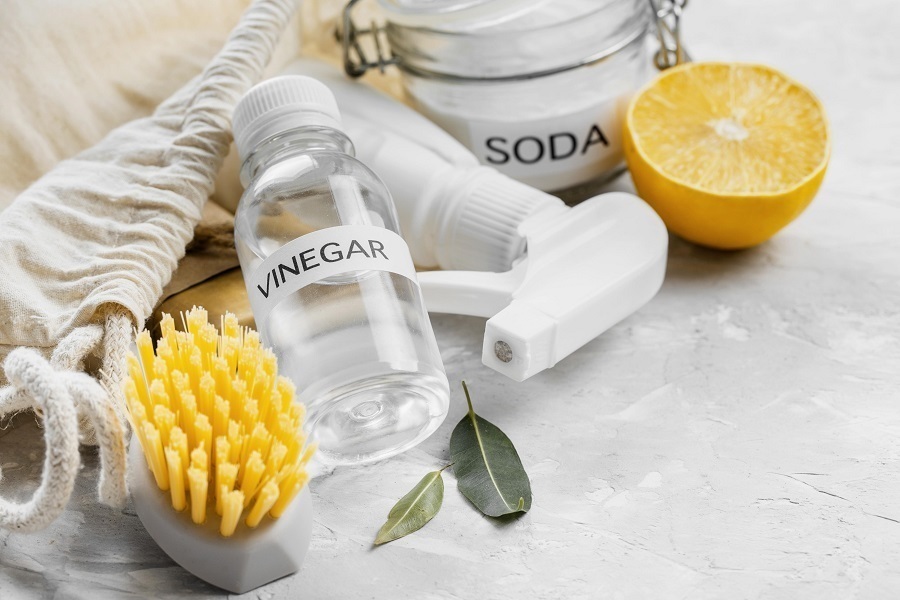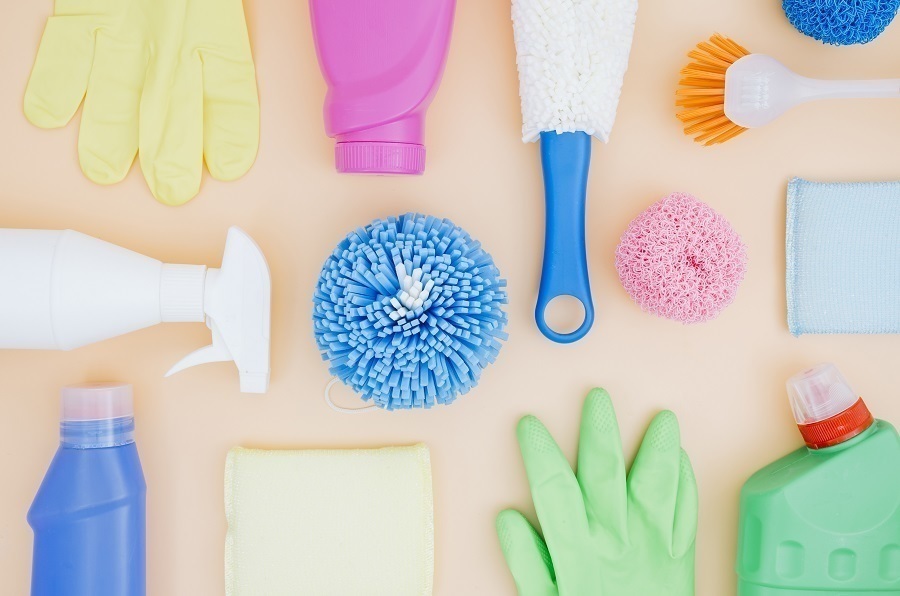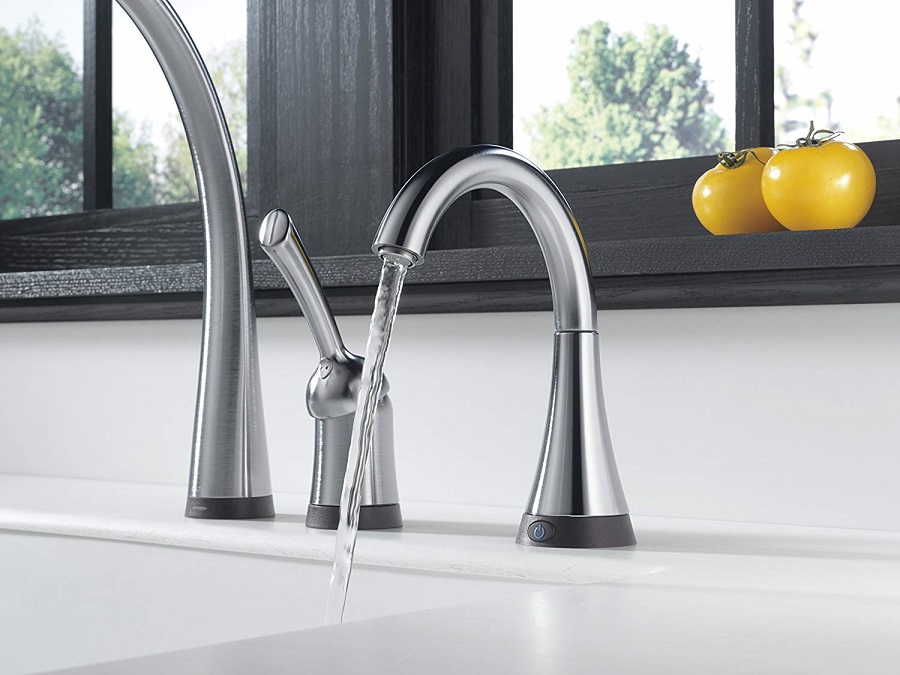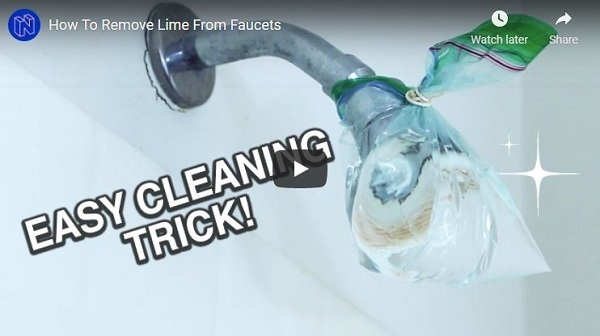Last updated on
Here’s how to get rid of limescale buildup on faucets the easy way. All you need is white vinegar and a plastic bag. Check it out!
After using hard water for a while, you may start to notice buildup around your faucets. Although this buildup takes on various shapes and colors, it’s always composed of calcium that is pulled out from the water that otherwise would be safe to drink. To remove the buildup from your faucet, you’ll need white vinegar or store-bought cleaners. After using white vinegar to scrub the calcium buildup away, you can remove still-visible stains with store-bought cleaners by either spraying them on or dipping a rag into cleaner and rubbing it across the surface.
So how do we get rid of that old limescale? I use an acid solution in my own home but if White Distilled Vinegar is all you got, then open up those windows because the smell won’t be great! Ideally what we want is a soap-base.
What's Inside
Materials You Will Need

A quick option is to use an acidic liquid. Vinegar and lemon juice are common contributors, with the potential of ore industrial acids on the market depending on whether we’re cleaning intake pipes. Acidic cleaners break down deposits; in addition to acids, there are also phosphoric acid types and sulfuric acid. These different chemicals break down buildup from calcium deposits — it may take a little while depending on who tough your problem is.
You may use:
- White vinegar
- Lemon juice
- Phosphoric acid cleaners
- CLR cleaner
- Sulfuric acid
- Muriatic acid (it’s very strong — mix with water 1:5)
Tools You Will Need

The first thing you need to do is assemble your tools in a convenient place where the sink is. This should include wearing protective eyewear and gloves, but don’t forget your other tools like a sponge or toothbrush. Now it’s time to get immersed into the project without feeling anxious!
Use these tools:
- Protective eyewear
- Rubber gloves
- Sponge or toothbrush
- A plastic bag
- Rubberband
- Rag or cloth
- Pliers
Now, on to the process:
Remove the Faucet Aerator
Most online DIY sites suggest wrapping a plastic bag over the faucet and pulling (using rubber bands to secure). This removes only the buildup on the faucet’s outer and doesn’t usually reach inside of it. To cough out build-up from inside, first, remove the aerator off its base. To do this, stand over the Faucet and grip it firmly with pliers and twist anti-clockwise (left). Be careful to keep each part in order so that you know how you can replace them afterward.
Soak Faucet Parts in Acid Solution
Break out your protective eyewear and fill a bowl with a solution of your choice. As you clean, be careful not to cause any damage by tightening the bands too hard. Fill a plastic bag wrapped around the fixture (secure with rubber bands) with a solution using the same diluting and timing rules as in step one.
Note: If the faucet base is tough, soak an old towel or rag in vinegar and wrap around it for at least an hour or two before scrubbing off any stubborn calcium deposits there. Also, double-check ingredients to make sure you’re safe to use certain acids on all surface types.
Rinse and Scrub
For best results, unscrew the aerator from the faucet’s mouth and submerge it in vinegar for 1-2 hours using a plastic bag.
Scrub off stubborn stains left by calcium buildup, but be careful about using abrasive scrubbers like steel wool or metal scrapers, scratch delicate surfaces inside the faucet and promote future corrosion.
Next, rinse and scrub out the aerator with soap water to completely remove any mineral deposits before replacing it in your sink’s faucet mouth again to resume normal water flow.
Vinegar might bubble up out of fixtures made entirely from copper (not recommended) or those that have a mixing valve that might get corroded inside if diluted vinegar is left in there long enough, so try some other types of cleaning products first instead unless you want to be surprised by sudden fountain-related antics half an hour later when no one’s home!
Prevent Calcium Buildup and Corrosion on Faucets

Check Out the Top 10 Best Kitchen Faucets for Hard Water
To prolong the lifespan of your faucet, avoid clogging pipes, affecting water pressure and eventually requiring pipe replacement, you should get a water softener installed. If you install a water softener, your faucets will be cleaner after one limescale cleaning because the build-up happens when tap water has dissolved minerals.
Your best option in avoiding these problems is by ensuring you always have the right amount of minerals in your tap water. This helps avoid having calcium accumulate on pipes and destroy components that store overflow from sinks, showers, dishwashers etc.
Another option is using kitchen faucets and sinks for hard water that are resistant to buildups and corrosion. These are usually made of stainless steel and use built-in water filters. The maintenance of these faucets is easier.





